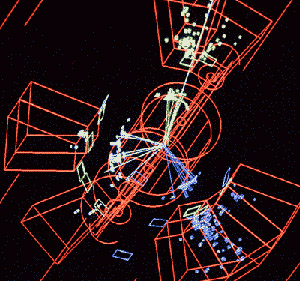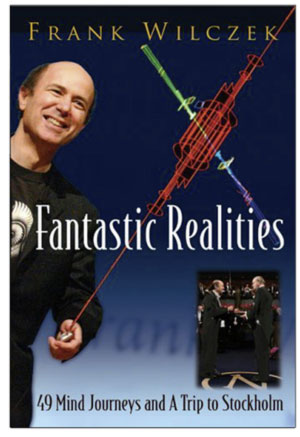
Core
The Analytic Theory of Matter
 What is matter? Forty years ago ideas about its fundamentals were vague and fragmentary. We've come a long way toward mastering matter, while gaining new insight into the nature of space and an inspiring vision of the symmetry of physical law. The analytic theories of matter, emerging from strange and once-revolutionary ideas from quantum theory and special relativity, are the Core of modern physics.
What is matter? Forty years ago ideas about its fundamentals were vague and fragmentary. We've come a long way toward mastering matter, while gaining new insight into the nature of space and an inspiring vision of the symmetry of physical law. The analytic theories of matter, emerging from strange and once-revolutionary ideas from quantum theory and special relativity, are the Core of modern physics.
My first work in physics helped establish a major part of this Core, the theory of the strong force. (That's the work for which I got a Nobel Prize in 2004.)
The Core presents many scientific challenges and opportunities, as well as visionary insights. What was the early Universe like? What goes on deep inside neutron stars? What is space? Where does mass come from? These questions are now ripe.
Seven Easy Pieces
 Just a few of my (non-technical) thoughts on what I call the "Core." There's a much larger collection, Fantastic Realities, where all these pieces can be read on paper.
Just a few of my (non-technical) thoughts on what I call the "Core." There's a much larger collection, Fantastic Realities, where all these pieces can be read on paper.
- When Words Fail
- Language builds in assumptions about reality that we must question.
- World's Numerical Recipe
- How to instruct a computer to cook up the physical world using numbers -- getting Its from Bits.
- In Search of Symmetry Lost
- The most beautiful equations seem too good for this world -- but maybe not!
- QCD Made Simple
- "As simple as possible", within the bounds of honesty. (Look ma, no equations!)
- Quantum Field Theory
- Describing the conceptual roots and the deep consequences of physics' most profound theoretical construction.
- Asymptotic Freedom: From Paradox to Paradigm
- My Nobel Prize lecture. How asymptotic freedom solved the strong interaction, and opened up important new frontiers.
- The Origin of Mass
- An earlier, concise discussion of some main themes in Part 1 of The Lightness of Being, with nice graphics.
More About This
The internet is an amazing source of information (and misinformation) about almost any topic. Here are a few URLs if you want to dig into elementary particles and unification.
- One page summary
- Particle physics and the standard model, in (very) brief, from the Particle Data Group of the Lawrence Berkeley Laboratory, from their "Particle Adventure" website where you can discover much more.
- Particle concepts
- Award-winning, massively hyperlinked website about elementary particles, developed by Carl R. Nave at Georgia State University as a resource for high school teachers.
- Fireworks of Elementary Particle Physics
- Interactive and enjoyable exploration of the "Standard Model," created by Elena Symeonidou of the University of Athens.
- MIT physics courses available online
- MIT's OpenCourseWare project makes MIT courses available for free public access.